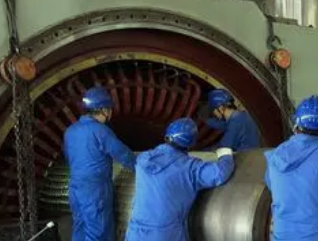The generator is one of the essential main equipment in power plants such as thermal power plants and hydropower stations. It consists of a stator, rotor, and various systems, especially the rotor component which occupies the c-position in the generator. Through the interaction with the stator electromagnetic field, mechanical energy is converted into electrical energy. After long-term operation, it is prone to failure. Therefore, the rotor needs to be lifted twice a year to check for any faults in the rotor and other components of the generator.

Lifting the rotor of a generator is not a simple and easy lifting operation. Considering the large tonnage of the rotor and the high precision requirements for installation, maintenance personnel must develop a plan guide and repeatedly inspect mechanical equipment such as chain hoists and cranes that need to participate in the lifting operation before lifting.
When carrying out the lifting operation, the chain hoist is hung on the hook of the crane. The maintenance personnel pull the chain of the chain hoist to slowly move the rotor outside, and also carefully observe the gap between the rotor and the stator to prevent them from colliding with each other. Finally, with the help of auxiliary devices such as skateboards, sliders, sliders, rubber pads, etc., the rotor slowly moves outward from the inner chamber of the stator under the coordinated traction of the crane and the manual hoist.